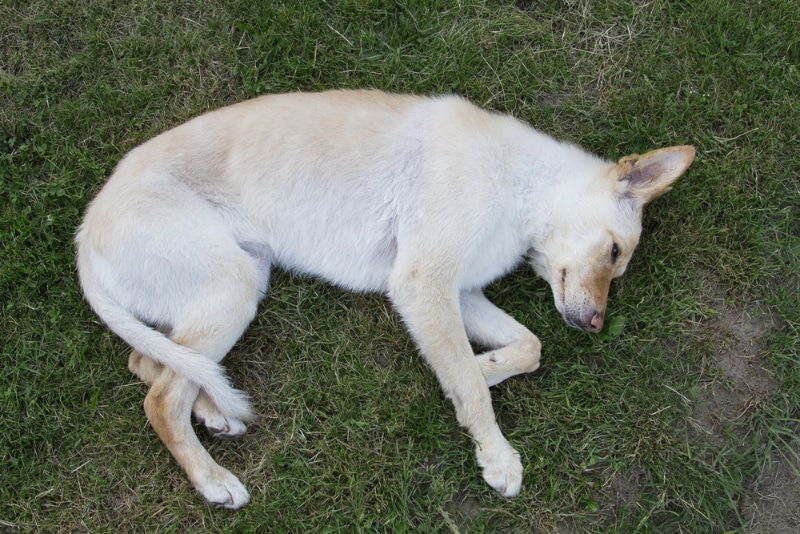No one wants to find their dog non-responsive. Maybe they’ve been slowly declining with age, or maybe you’ve found them in this state out of the blue. The first thing you’ll probably wonder is if they’re alive (but unconscious) or have actually passed away. This can be surprisingly challenging to differentiate in dogs.
The below five tips are provided as a guide to help you, but we emphasize that they should never replace veterinary help. If you have found your dog non-responsive, contact a veterinarian before doing anything else.
The 5 Things to Do to Check if Your Dog Is Dead or Unconscious
1. Check for a Pulse
This can be challenging, as it takes experience to identify a pulse. Remember, vets feel dozens of pulses every day. Furthermore, you are feeling for a pulse that may be weak, if your dog is in shock, or absent, if they are deceased.
The easiest place to feel a dog’s pulse is on the inside of the thigh, at mid-leg height; the pulses can be felt near the surface, just below the skin. Alternatively, place your fingers on the chest in the left armpit region and feel for a heartbeat.
2. Check for Breathing
At this point, it helps to stay calm and take a step back. Watch for a rise and fall in your dog’s chest, which signifies breathing. If your dog is breathing, he or she is still alive. If you are unsure, you can place your hand on the chest to see if it moves up and down, or you can listen closely near the mouth.
Note that a gasping or gulping type of breath is not normal breathing; this could be an indication that your dog has an airway obstruction or is about to pass away (“agonal breathing”).
3. Check for Reflexes
You can cautiously try pulling your dog’s tongue—he or she should draw it back into their mouth. You can also gently tap on the surface of the eye (cornea)—this should elicit a blink reflex. The absence of these reflexes is usually a sign that a dog has passed away.

4. Check for Other Signs
Try to gently shake or startle your dog and see if they respond at all. If this doesn’t work, try pinching the skin between the toes (with moderate force). Check for tremors or muscle convulsions, which could indicate seizures. Check for any drooling or lip-smacking, as well as any evidence of urination or defecation.
5. Check for Rigor Mortis
Depending on the condition that caused death, rigor mortis can set in anywhere from a few minutes to a few hours after the time of death. Rigor mortis is a post-mortem change in the body that causes stiffening of all muscles. Once it occurs, it is a reliable sign that a pet is deceased.

Conclusion
This article won’t explore the different causes of sudden death in dogs. If you’ve found your dog in a non-responsive condition, it’s best to focus on determining if they’re alive and seeking urgent veterinary care. We recommend using the above five-step guide while you’re in transit to a vet clinic if someone else is able to drive.
Featured Image Credit: Galina Photo, Shutterstock











